Politics
The Islamist-Marxist Dialectics Of ‘Real Love And Pretend Hate’ Relationship
Aravindan Neelakandan
Jul 19, 2018, 07:14 PM | Updated 07:14 PM IST
Save & read from anywhere!
Bookmark stories for easy access on any device or the Swarajya app.
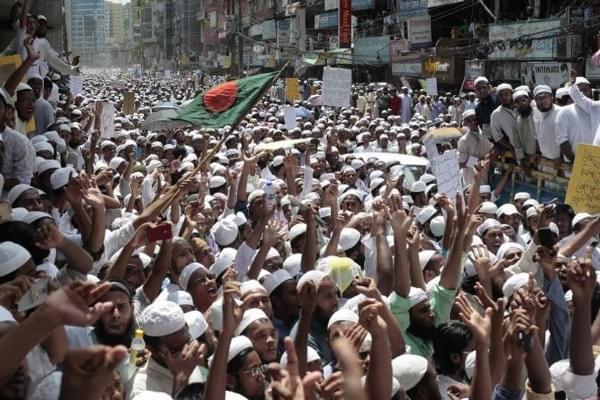
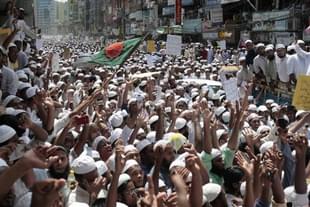
Students Federation of India (SFI), the student wing of the Communist Party of India (Marxist) or CPI(M), has long been known for violence in college campuses. Now, they have a rival from their Islamist comrades. On 1 July 2018, SFI student leader, Abimanyu, of Maharaja College, Kochi, was brutally murdered. Kerala police has arrested three in connection with the murder – two students in their late teens. They all belong to the Popular Front of India’s (PFI’s) student wing called Campus Front of India (CFI).
The brutal murder of the 20-year-old student leader was gruesome enough to shock political observers in a state known for its political violence. Political analyst N M Pearson, talking to Times of India, has said that only those who have been trained with a mindset to kill can do this kind of crime. Many members of outfits such as CFI are known for this mindset, he said.
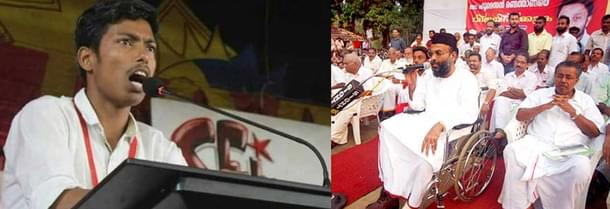
However, the media and political observers seem to have overlooked the CPI(M)'s own soft approach to radical Islamist outfits, which is leading to the brutal murders of its own cadre.
Early 2006, a conference of People’s Democratic Party (PDP), a fundamentalist Islamic organisation headed by the then Coimbatore-bomb blast main accused Abdul Nasser Madani, was held in Kerala. Apart from known Islamist fundamentalists, it was also attended by delegates from both the CPI(M) and the Revolutionary Socialist Party (RSP). Here, the plan regarding a possible formation of a Muslim United Front, an umbrella organisation of all Muslim bodies in the state under Jamaat-e-Islami allied with the Left Democratic Front, which will subsequently be expanded to the national level, was discussed. In November 2006, PFI was formed. It would not explicitly come under the Jamaat-e-Islami, but there exists a symbiotic relationship.
In 2009, when PFI convened a rally and meeting, the participants included the who’s who of the Left elites in India. Prof Arunan, an extremely Hinduphobic CPI(M) ideologue from Tamil Nadu, was also a prominent participant. PFI grew bold indulging in punishments and Taliban-style executions. In Tamil Nadu, Thirumurugan Gandhi, a Luddite Tamil separatist and leader of Left-radical outfit ‘May-17’, who opposes vaccination as a conspiracy against Tamils, is a regular speaker at PFI and SDPI meetings, where he calls India as an ‘artificial construct’.
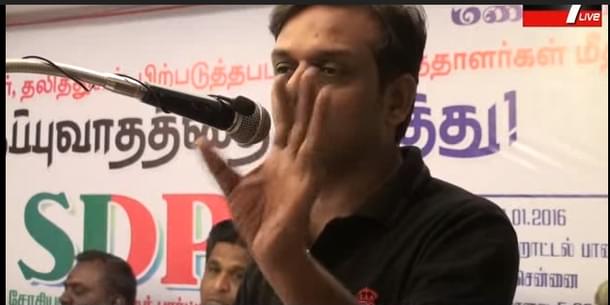
In 2017, reeling against the exposes in popular media about its clandestine activities, PFI went for a huge all-India publicity drive. In every state, PFI showed its power to network with local anti-Hindu forces, including the Christian church, Tamil separatists and variety of Left radical organisations. In Tamil Nadu, Communist Party of India (CPI) deputed two of its leaders to the PFI conference – Gunasekaran and Sethuraman – national committee member of CPI.
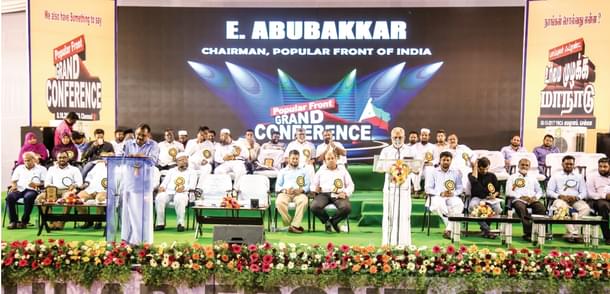
In 2018, when there was a demand for the ban on PFI, Kerala Chief Minister Pinarayi Vijayan jumped to its defence, declaring that he never demanded the ban of the outfit and that the Rashtriya Swayamsevak Sangh (RSS) should be the organisation that should be banned. However, in 2010, when CPI(M) leader and then chief minister V S Achuthanandan accused PFI for aiming at ‘Islamisation of Kerala’, Vijayan had supported and endorsed that claim. In Tamil Nadu, leading Marxist party ideologues like Prof Arunan and radical Left-Tamil nationalists such as Suba Udayakumar have participated in PFI conferences.
The violence at the ground level between the stormtroopers of Islamist and Marxist outfits, while both bonhomie and strategic support, extended to Islamist movement by the Marxist leaders at the ideological level have to be understood in the historical context of India.
Marxism and Islamism share a theo-ideological core: a deep hatred for democracy. The striving for a totalitarian state, complete annihilation of ideological and theological enemies and using of the social evils prevalent in democratic systems to justify the above two, are also aspects shared by both. If Marxism provides both emotional and intellectual justification for the totalitarian state in seemingly secular terms, Islamist movement has discovered that the anti-democratic nature of Marxism with its secular pretensions can be borrowed and used for its own pan-Islamic programme.
Marxists and Islamists share a long history of convergence both in terms of ideology and strategies. Pan-Islamists saw in the emergence of the Soviet Union an opportunity for, and a possibility of, the dawn of their lost caliphate.
The totalitarian nature of Islamism spontaneously appeals to a Marxist mind. Between secular Kamal Pasha and his pro-Islamist rival Enver Pasha of Turkey, sympathy of Lenin veered towards the latter, though later Lenin would find Enver siding with anti-Soviet Islamists. It was only when Pasha tried to carve out an Islamic territory out of Soviet Union and align with Afghanistan, Lenin would turn against him.
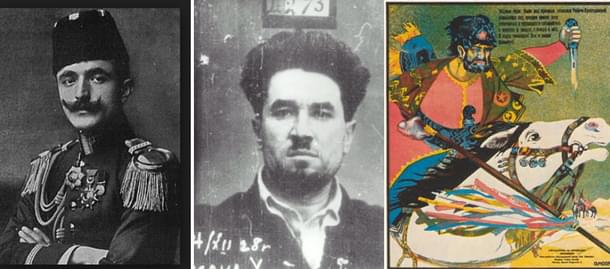
Enver Pasha explained in detail to an enthusiastic Lenin how to make India part of the 'World Revolution'. Lenin should help create an Islamic Republic in Chinese Turkestan. Enver Pasha would in turn raise from there a revolutionary army, which would in turn invade India and 'liberate' it. M N Roy, an Indian convert to communism, was critical of Pasha – not for his idea of jihad, but because Pasha might have had his own ambitions. Instead of an external aggression, Roy suggested to Lenin that Islamic jihad should come from within Indian Muslims. Roy was more successful in getting Soviet support for his Islamic jihad.
Roy was also influenced by another important figure in Lenin's Islamic movement – Mirza Sultan Galiev. Nurtured by Lenin, Sultan Galiev developed the concept of Muslim national communism. He was both a Marxist and a Pan-Islamist. In April 1917, Sultan Galiev had formed the Muslim Socialist Committee, whose ‘guiding themes were openly pan-Islamic, with only a superficial Marxist veneer’. Though he himself was not much of a believer, probably atheist, he oscillated between political Islamic discourse and Marxism. Roy became ‘the main channel through which Soviet Muslim national communist ideas were spread to the Third World.
From India, a young religious scholar, Maulvi Barkatullah, had penned a pamphlet ‘Bolshevism and Islamic Body Politic’ in 1919. This young man was moving world over with agony for the fall of the Ottoman Empire at the hands of the British, in his heart, and with a vision of another global caliphate. He met Lenin and wanted to make Soviet Union cooperate with the Islamists.
Roy, through his conversion to Marxism, and because of his flirting with Islamic jihad, had developed his own theory of the superiority of monotheistic Islam as a progressive liberating force arriving in India over the decadent Brahminical polytheist Hinduism. This perception of Roy has since then provided a template for the Marxist academics and politicians in India to view all Hindu-Muslim encounters. Jihad for Roy did not stop with India. He envisioned a jihad being declared against British in India and 'an army of Allah' would be formed to liberate Asia. Here, it should be noted that while it was Marxist theoreticians of India such as Roy, who dreamt of a quasi-Marxist-Islamist expansion and Asian utopia, Lenin was himself not much bothered about India or Asia. He used the threat of Soviet-sponsored Indian Muslims waging jihad for re-establishment of the Ottoman Empire to put pressure on Britain to sign the Anglo-Soviet Trade Agreement in 1921.
Another Indian leader, Maulvi Obeidullah Sindhi, was a Sikh convert to the Deoband school of Islam. He saw communism as similar to Islam, but incomplete and inferior. He also saw Islam as a greater unifying principle of linguistic and cultural diversity of humanity than communism. For Obeidullah, institutional parallels existed between Marxism and Islam. The communist state existed more perfectly in the religious society created by Muhammad. More importantly, the Marxist socialist revolution he saw as an “atheistic analogue to the theistic jihad in all its myriad forms – offensive and defensive; personal, psychological, cultural, literary, political and military”.
So, when in October of 1920, the CPI was established in Tashkent, three prominent Indian personalities present there were believers in a pan-Islamist caliphate and Jihad - Barakatullah, Obeidullah and Roy.
When Mahendra Pratap was sent by the communist-Islamists for fundraising to the other Indian revolutionaries worldwide, Rash Behari Bose was alarmed by the tone of pan-Islamism. Though he gave Pratap a fund of 400 gold pounds, he also cautioned that this was not the time for Pan-Islamism but for Asiatic unity. Earlier, while meeting Lenin, he was favourably disposed to the Pan-Islamic dream of Barakatullah, he was dismissive of Mahendra Pratap's vision of Asiatic unity, accusing him of Tolstoyism.
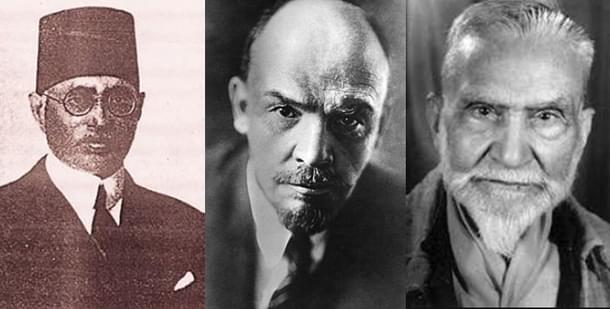
In 1924, Lala Lajpat Rai, the famous Indian freedom fighter, was on a world tour to garner support for the Indian freedom movement from the international community. In Istanbul, he met Obeidylluah, who gave Rai ‘a printed scheme about the federated republics of the sub-continent’ issued on behalf the Kabul Congress Committee. The plan, known as Obeidullah plan, simultaneously presented two things: one, India was considered as a federation of linguistic republics, while an Islamic caliphate was shown as transcending the present nation-state borders. To achieve this and become part of the united Islamist caliphate, Indian nationalists were asked to drive away the British. Though it was only in 1950 that Stalin’s thesis on linguistic nationhood was published by Moscow English press, it had already become famous. In fact, the concept of nationhood with self-determination that Lenin implemented was derived from Stalin's concept of nation.
In a very strict sense, Muslims would not as a category fit the four factors Stalin enumerated for a people to become a nation. This created problems for Soviet rulers with Muslims in their own territory. However, this was overcome by the concept of ‘Muslim National Communism’. Though Stalin later executed Sultan Galiev for ‘deviation’, Indian Marxists successfully adapted this in India and justified Islamist separatism.
Indian communists were quick to apply this Stalinist Soviet doctrine to a political Islamist demand of Pakistan in India. In 1942, when the CPI organised 'national unity week', it had two separate statements for Hindus and Muslims. The statement given to the Hindus condemned the British oppressive measures against national leaders, while the statement given to Muslims refrained from condemning the government, but spoke of 'necessary steps to effect a settlement between Congress and Muslim League'. The settlement was of course for the party in Pakistan. Mohammed Ali Jinnah welcomed this support by CPI, but warned against dragging Muslims in anyway into the national resistance movement. Communists obediently obliged the Islamist leader. Even Jawaharlal Nehru called Marxists as full-blooded supporters of Jinnah's demands.
All these streams of Islamists trying to use Marxism and Marxists trying to use Islam converged in the preaching of one activist – Maulana Sayyid Abul A'la Maududi (1903-1979), the founder of Jamaat-e-Islami. He appropriated and digested the complete Marxist worldview and methodology into his Islamism.
Except for the atheism, Maududi was sympathetic to the Marxist worldview. He contended that it was because Hegel and Marx had not read Quran, they could discover only one part of the truth. Humanity started as a straight line in Islam and then became crooked. This crookedness, according to Maududi, was what Marx saw as the problematic aspects of capitalist society such as exploitation, alienation etc. Maududi also recognised the crookedness. But for him it came from not economic factors but jahiliyat – the ignorance and darkness of human perversion that existed prior to Islam and exists because of the non-implementation of Islam. So, Maududi said that Marx and Hegel "only saw the crooked line but failed to see the straight line of Islam drawn since eternity”. His terminology was outright Marxist, differentiating between reactionaries and revolutionaries: “When Islam becomes dominant, then in reaction, jahiliya prepares itself against Islam. When jahiliyat rises, then Islam prepares for revolution against it (emphasis added).
In his 1939 lecture delivered at Lahore, Maududi placed jihad in the context of Islam which in turn he envisioned in purely Marxist terms as a 'revolutionary ideology and programme which seeks to ‘alter the social order of the whole world’. If, for Marxism, class conflict is at the root of all violence, for Maududi, it was ‘shirk’. Shirk encompassed not just physical idols worshiped by kafirs like Hindus, but it also included concepts of modern nationhood among others.
After partition, Jamaat-e-Islami leaders went to Pakistan. The organisation was divided and an Indian organisation Jamaat-e-Islami-i-Hind was established. Maududi was against partition, not because of the love for India but because he was afraid such a division would lure away Indian and Pakistani Muslims into nationalist discourse and would pit them against each other. Yet, when Pakistan was established, Jamaat-e-Islami was happy that they had an Islamic state. For Maududi, like Roy, Islamic state in one country is only a tool for a greater Islamic jihad to make the world accept Islam. He detailed the expansionist nature of Islamic revolution he envisioned:
Islam does not want to bring about this revolution in one country or a few countries. It wants to spread it to the entire world. Although it is the duty of the ‘Muslim Party’ to bring this revolution first to its own nation, its ultimate goal is world revolution... Therefore, both for its own safety and general reform, a ‘Muslim Party’ will not be content with the establishment of Islam in just one area alone. It should try to expand in all directions. On one hand it will spread its ideology, on the other hand it will invite people of all nations to accept its creed, for salvation lies only therein. If this Islamic state has power and resources it will fight and destroy non-Islamic governments and establish Islamic states in their place.
Another important parallel between Marxist and Islamist methodology is that despite their hatred for democracy, they use the very same parliamentary democracy as a strategy to subvert from within.
The CPI, though established in 1920, adapted parliamentary democracy between 1954 to 1958, mainly as 'coolly thought-out and careful change-over'. It is only 'a seriously meant policy' and not faith. It was only 'pressure from Moscow' which made communists 'elevate parliamentarism from tactics to a strategy'. Still it was only a strategy.
Maududi had declared democracy a ‘shirk’ – the gravest sin in Islam. Yet today, Jammat-e-Islami in India supports Islamist political parties like SDPI in elections. Scholar Irfan Ahmad narrates how when interviewed by him, Shaheed, a leader of the student wing of Jamaat, the Student Islamic Organisation of India (SIO) in Aligarh, told Ahmad of the decision of Jamaat to participate in the democratic process in 2002 – to fight 'communal fascist' Bharatiya Janata Party. When queried if the Jamaat was deviating from the stand of Maududi that democracy and secularism were forbidden, he answered that Jamaat had 'fundamentally changed' and 'its acceptance of secularism and democracy was the glaring sign of that change.' However, after a week when Ahmad met Shaheed who was joined by two Jamaat friends, 'he reversed his view and said the Jamaat had not changed.' Ahmad writes that he 'encountered several such episodes'. Later, Ahmad would learn that 'the Jamaat had not changed and if it had, the change was only tactical'.
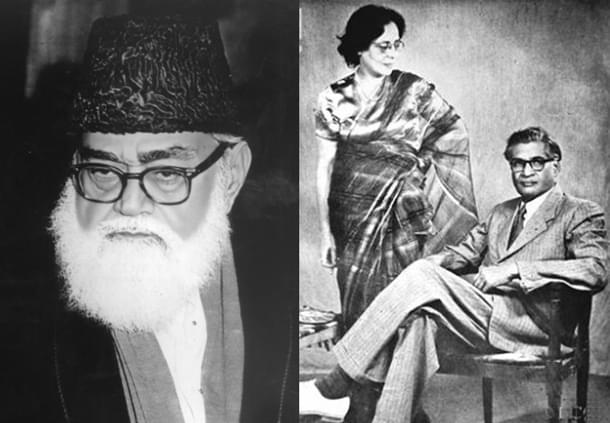
That, despite seemingly independent national organisations, the Jamaat-e-Islami are united through a vision of transnational Islamic state. The working style of Jamaat-e- Islami in different countries with superficial and even legal independent nature and yet working submissively for a collective target is very similar to the way communist parties in different countries work with a seemingly national character, but always work for the welfare of a larger and usually extraterritorial communist state (once Soviet Union and now China).
The way this strategy works can be seen through the way the organisations in the larger Indian land mass reacted to the 1971 genocide perpetrated by Pakistan in Bangladesh (then East Pakistan). Jamaat-e-Islami of Pakistan became active participants of the genocide. Later, the leaders of the Jamaat were charged with war crimes. Post-1971, Jamaat-e-Islami quickly established a seemingly independent Jamaat-e-Islami Bangladesh body. They demanded the release of these leaders, who had participated in the genocide. In 2013, India-based Jamaat-e-Islami (Hind) raised the same demand to the government of Bangladesh. The genocidal crimes were described by Indian Jamaat as ‘political differences’.
But all these did not stop the Left-wing intellectuals in embracing this organisation. In Kerala, when Jamaat-e-Islami launched Madyamam, a media house, the who’s who of Kerala intellectuals competed with each other to write in it. It helped them among other benefits to showcase their ‘secular’ credentials. Later, this ambience of acceptability would be extended to PFI as well.
The Left-Islamist commensalism should be understood in this historical framework of ideological evolution and appropriation of Marxist methodology by Islamists. The modern pan-Islamist movement in India including the PFI owe their origins not only to Maududi, but also to Roy.
From Jamaat-e-Islami Hind came SIMI – now banned ‘Student Islamic Movement of India’. Then from early years of 2000, the Obeidullah plan was given a new shape. In every state, a separate organisation was created which simultaneously networked with the centrifugal forces in those states while at the same time emphasising Islamist politics. Soon, they all merged to form PFI.
Even now, Marxist theoreticians such as Prabhat Patnaik consider radical Islamism “as ‘anti-imperialist’ and ‘anti-consumerist’ in the contemporary world”. It should be noted that Patnaik was employed by the state government of Kerala as the vice-chairman of the Kerala State Planning Board from June 2006 to May 2011.
In the post-liberalisation, post-Soviet and post-Afghanistan era, Islamist-Marxist cooperation has diversified. Today, Marxists are into identity politics, Luddite movements and Left-wing terrorism. So are the Islamists. The spectrum of Left-wing politics from CPI to the violent Maoist groups stand with ‘Breaking India’ forces at various levels of cooperation, but ideologically, they share a common domain – a virulent anti-Hindu programme.
This historical roots should explain why CPI as well as CPI (M) do not hesitate to share dais with organisations such as PFI and SDPI even when PFI-outfits kill CPI(M) cadre. To the Islamist, even a Marxist, when a Hindu, is a Hindu. As Mughal historian Abd-ul-Qadir Bada'uni records when asked how the Mughals would distinguish between the Hindus who fought on their side and on the side of Hindu resistance, army general Asaf Khan answered that whichever side they fell, the gain was Islam's. What is true of Hindus, who fought on the side of Mughals in the sixteenth century, is true of Abimanyus who fight on the side of Marxism-Islamism today. The Marxists cadre may not know it. But surely the top elite leadership of Marxism knows it. In the case of Islamists, there is more egalitarianism. Both the cadre and the leadership knows that when jihad happens, a kafir is a kafir whether he is a Marxist or a Hindutvaite.
References
Aravindan is a contributing editor at Swarajya.





